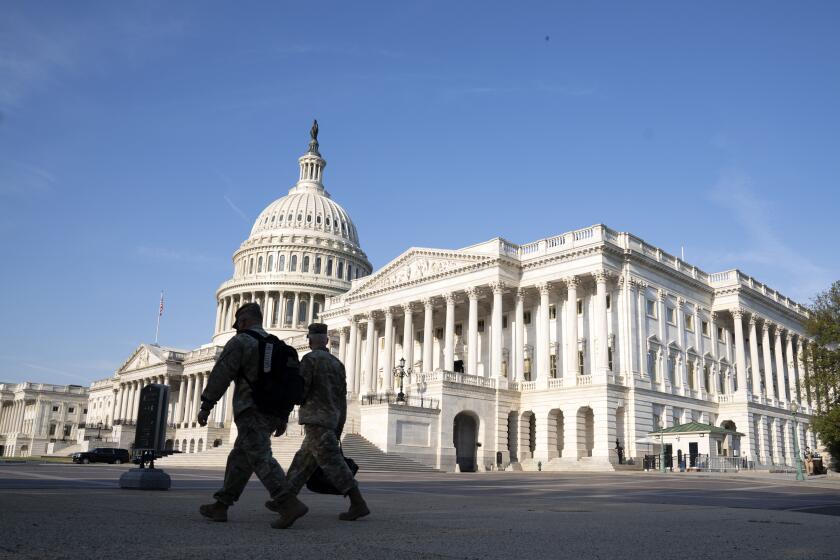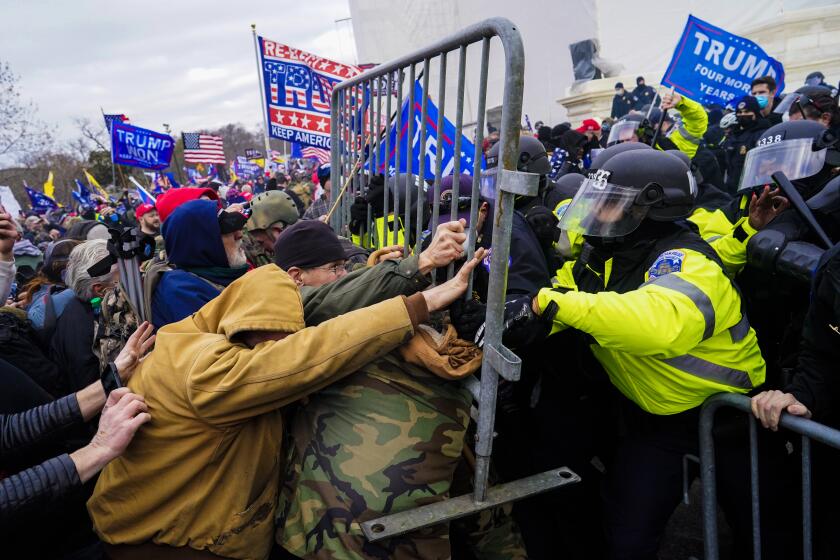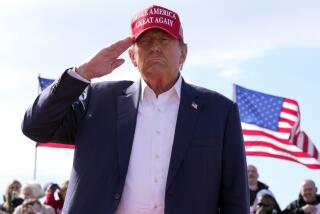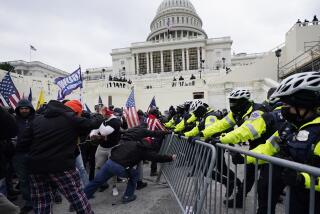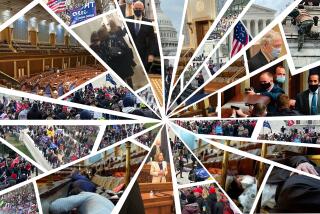Senate Republicans blocked a Jan. 6 commission. These questions might go unanswered
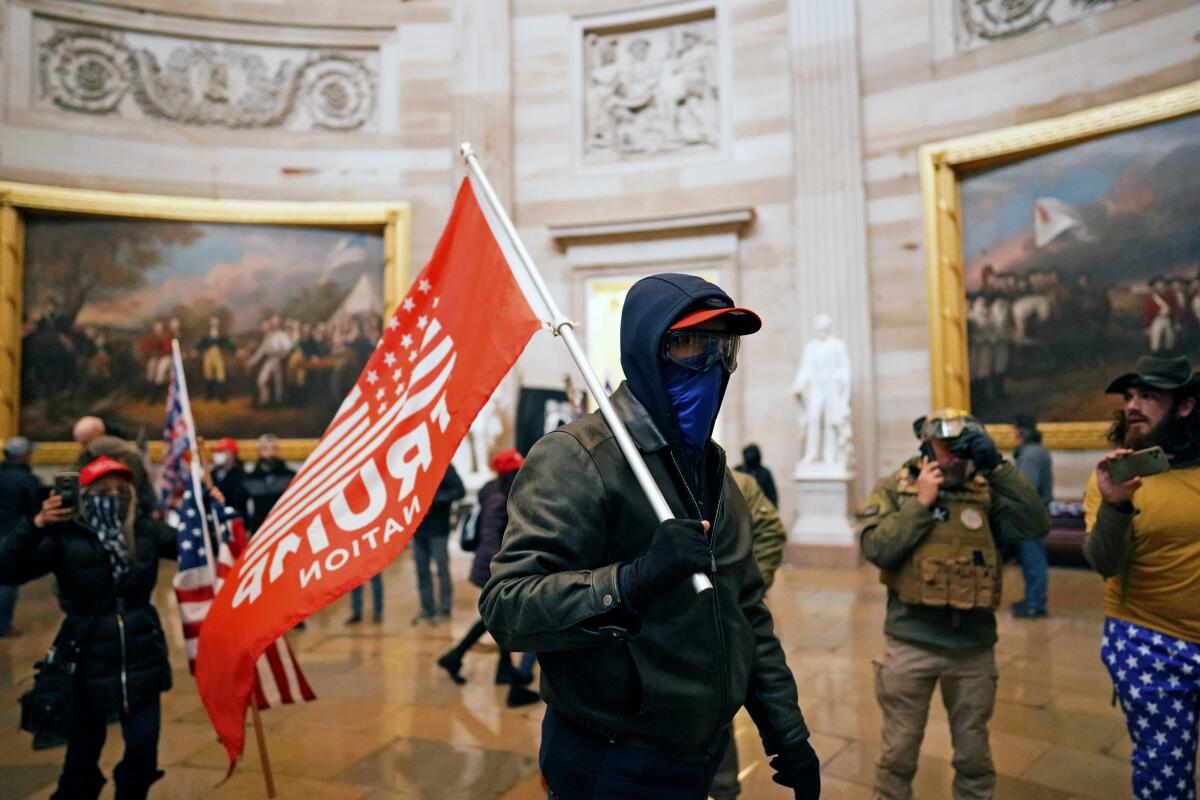
WASHINGTON — Senate Republicans on Friday blocked consideration of a bill to create an independent, bipartisan commission to investigate the Jan. 6 attack on the Capitol, a move that could make it difficult to answer some of the biggest lingering questions.
Dissenting Republicans have said that ongoing congressional hearings and Justice Department prosecutions will be sufficient, that they are worried the results could interfere with the 2022 midterm election and that it would be political.
Others have said they already know all they need to know. CNN reported Thursday that Senate Majority Leader Mitch McConnell (R-Ky.) asked GOP senators to oppose it as a “personal favor.”
The bill, which models a Jan. 6 commission after the much-praised 9/11 commission, passed the House with support from just 35 Republicans.
The independent 9/11 commission examined, without bias or party politics, the events before, during and after the Sept. 11, 2001, attacks, conducting more than 1,000 interviews and reviewing millions of classified and unclassified documents.
The 567-page report was made available from the government for free, but W.W. Norton & Co. won the right to publish it. The first authorized edition sold 1 million bound copies its first year and topped bestseller lists. It also led to major changes, including the creation of a national intelligence director who has authority over all agencies in the intelligence community.
To date, the Justice Department has brought charges against more than 450 people for their involvement in the Jan. 6 attack, but it could take years to prosecute everyone. New information is dripping out in those trials — security camera video, social media chats, interviews with defendants — but the Justice Department isn’t going to summarize it for the public.
But experts say an independent commission would provide a nonpartisan report of how it happened while also pulling together the disparate investigations.
Congress has created 150 such commissions since the late 1980s, according to the Congressional Research Service.
Lisa Gilbert, executive vice president at advocacy group Public Citizen, which is calling for an independent commission, described a commission report as a “repository for the centralized narrative.” The public will only get snippets from warring congressional hearings and watchdog reports, she said, which are restricted by the limits of their jurisdiction and authority.
An independent commission to study the Jan. 6 Capitol insurrection would be modeled after a similar panel that studied the 9/11 terrorist attacks and has long been hailed as a bipartisan success.
Without a nonpartisan entity pulling the disparate pieces together, Americans will probably never have a comprehensive view of the events that led up to Jan. 6, Brookings Institution scholar Molly Reynolds said. “We need a much broader look,” she said.
Here are a few examples of what experts fear could be left out:
What was Trump doing during the riot?
Little is known about what President Trump did between his rally at the Ellipse outside the White House, where he encouraged supporters to march on the Capitol, and three hours later when he praised them while calling on them to stand down.
Early reports, albeit from unnamed White House aides, said Trump was gleefully watching television coverage of the riot as members of Congress repeatedly called begging him to tell his supporters to go home.
Several Republican members of Congress spoke with the president during the riot or talked with his chief of staff, Mark Meadows, and other high-ranking advisors. Among them were House Minority Leader Kevin McCarthy of Bakersfield and Rep. Jim Jordan of Ohio. And yet, none of them are likely to agree to testify before a congressional committee.
There is very little Congress can do if a person chooses to ignore a subpoena beyond ask the Justice Department to enforce it, and Congress doesn’t tend to drag its members before committees.
But an independent commission would have the power to subpoena and interview White House staff members and members of Congress. Commissioners would have the authority to go to the courts if someone refused to comply, which would give their subpoenas more teeth.
Were the militias working together? And who was in charge?
Weeks before the riot, Trump supporters planned openly on sites like TheDonald.Win and Parler that there would be violence if Congress certified the election results. They discussed what weapons to bring, which lawmakers to kill first.
Was it bluster of a few people or were various far-right and white nationalist groups, such as the Oath Keepers and the Proud Boys, coordinating? Did organizers of the “Stop the Steal” rally that the president spoke at earlier in the day know something larger was planned?
The Justice Department isn’t going to summarize evidence from hundreds of court cases into a coherent narrative for the public, Gilbert said. “Some of the facts have been uncovered and we probably don’t even know.”
Republican senators filibuster a bill to establish a Jan. 6 commission to investigate the Capitol insurrection by Trump supporters.
How many weapons were present that day?
Photos, videos and depositions show guns, batons, mace and other weapons in the crowd, including inside the Capitol. Police recovered two pipe bombs planted at both political parties’ headquarters nearby and arrested a man at the Capitol with an arsenal of weapons, including bombs in mason jars that when set off would release a napalm-like substance.
The Justice Department has indicated it has evidence that the groups discussed a “quick reaction force” or heavily armed group that would be called to the Capitol if reinforcements were needed. The department has disclosed evidence of at least one arms cache at a hotel outside city limits.
In the end, most of the injuries were caused by weapons like mace, baseball bats and batons. But it’s unclear what happened to the cache of weapons that could have been brought to the Capitol.
And major questions remain about how a wooden gallows, with stairs and a platform, was constructed on the Capitol lawn; something that is unlikely to have been built with objects lying around the Capitol.
What role, if any, did members of Congress or congressional staff play?
Democrats have asserted that some Republicans gave tours to some of the insurrectionists and had prior relationships with them. Others have pointed to some rioters’ disturbing familiarity with the warren of hallways and tunnels that make up the Capitol complex as a sign they had inside help.
Democrats haven’t provided any proof to back up their accusations, and Capitol Police have been reticent about releasing security video of the building to the public. But the department might be compelled to provide copies to an independent commission, which would view them and summarize its findings for a public report. For example, the 9/11 commission report summarized classified national security documents and airport security video of the hijackers that the public could not access.
What security failures allowed fewer than 1,000 people to take over the nation’s seat of government?
Despite weeks of congressional hearings, officials have been unable to explain how America’s national security, defense, intelligence and law enforcement agencies allowed fewer than 1,000 Americans to seize control of a branch of government for several hours.
Militias and right-wing groups made plans on public forums, and news outlets reported on the threats of violence to come that day. But the FBI only notified Capitol Police and the D.C. Metropolitan Police the day before in an email to a low-ranking officer that didn’t make its way to those in power.
Christopher Miller, Trump’s acting Defense secretary, and Maj. Gen. William Walker, the commanding general of the D.C. National Guard, have given Congress conflicting timelines as to when orders were issued to mobilize the guard.
Trump said on Jan. 7 that he “immediately deployed the National Guard and federal law enforcement to secure the building and expel the intruders.” Miller and then-acting Atty. Gen. Jeffrey Rosen told Congress that they did not speak to Trump at all Jan. 6.
Gilbert said a commission could nail down what happened, but multiple congressional committees, and their short hearings, might struggle to reconcile the facts.
“The purpose of this is to actually follow the story and to have the time and the resources to take the next step” if stories differ, Gilbert said. “That is the distinction.”
There are also extensive questions about why Capitol Police weren’t better prepared.
“Congress needs someone to take a hard look at itself, and there is some capacity to do that in Congress, but I’m not sure there is the capacity that is needed,” Reynolds said.
More to Read
Get the L.A. Times Politics newsletter
Deeply reported insights into legislation, politics and policy from Sacramento, Washington and beyond. In your inbox three times per week.
You may occasionally receive promotional content from the Los Angeles Times.

